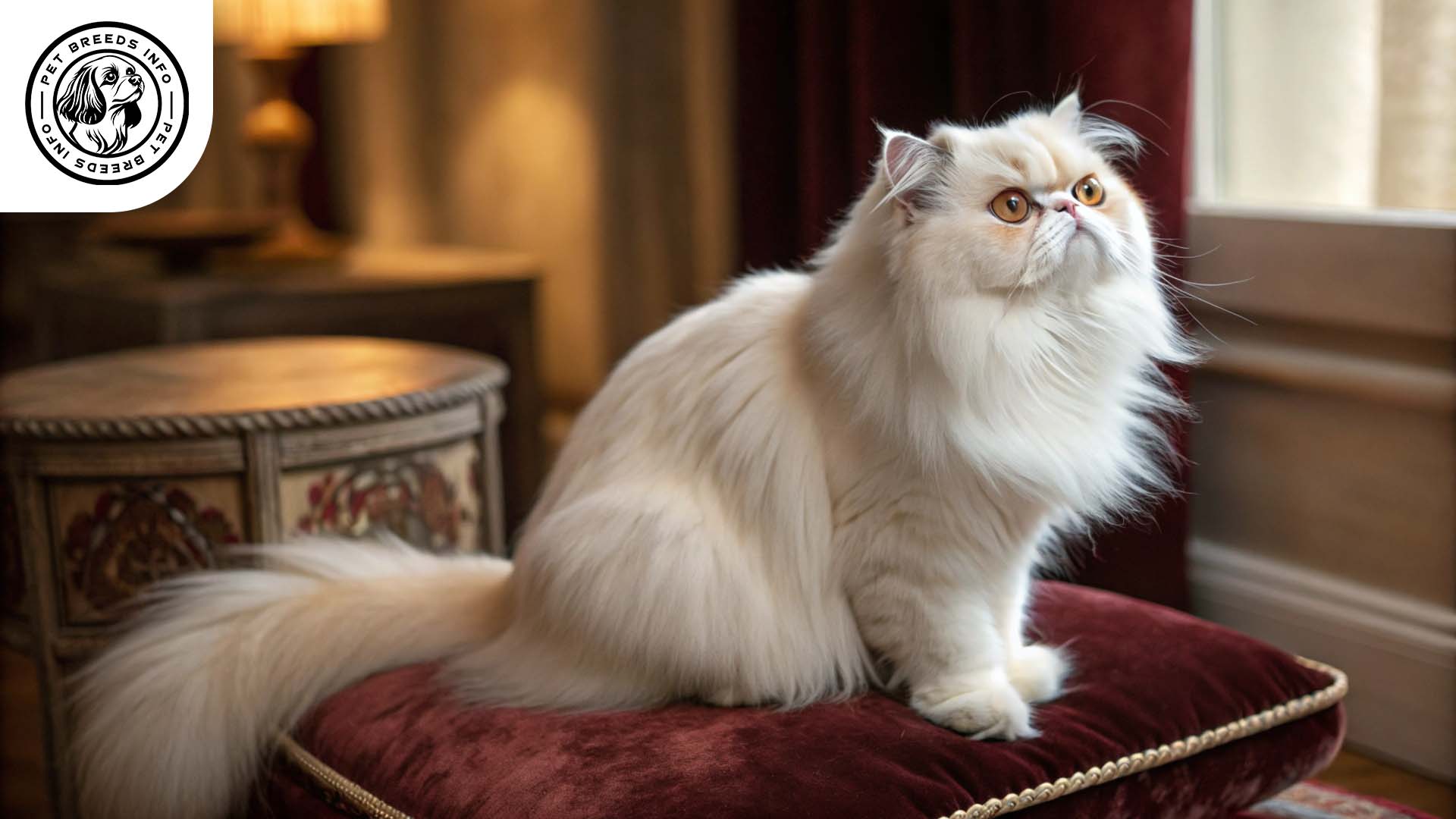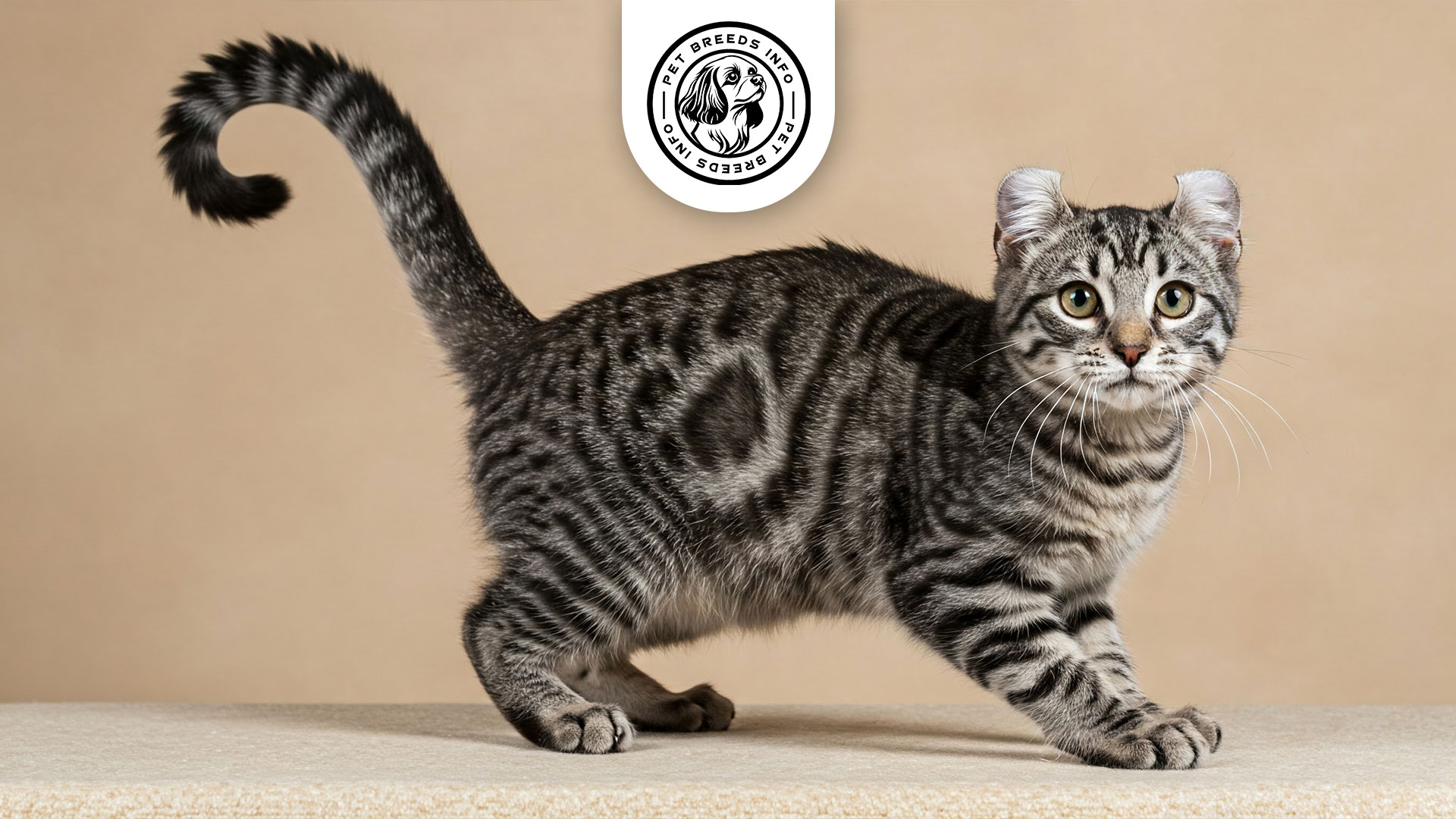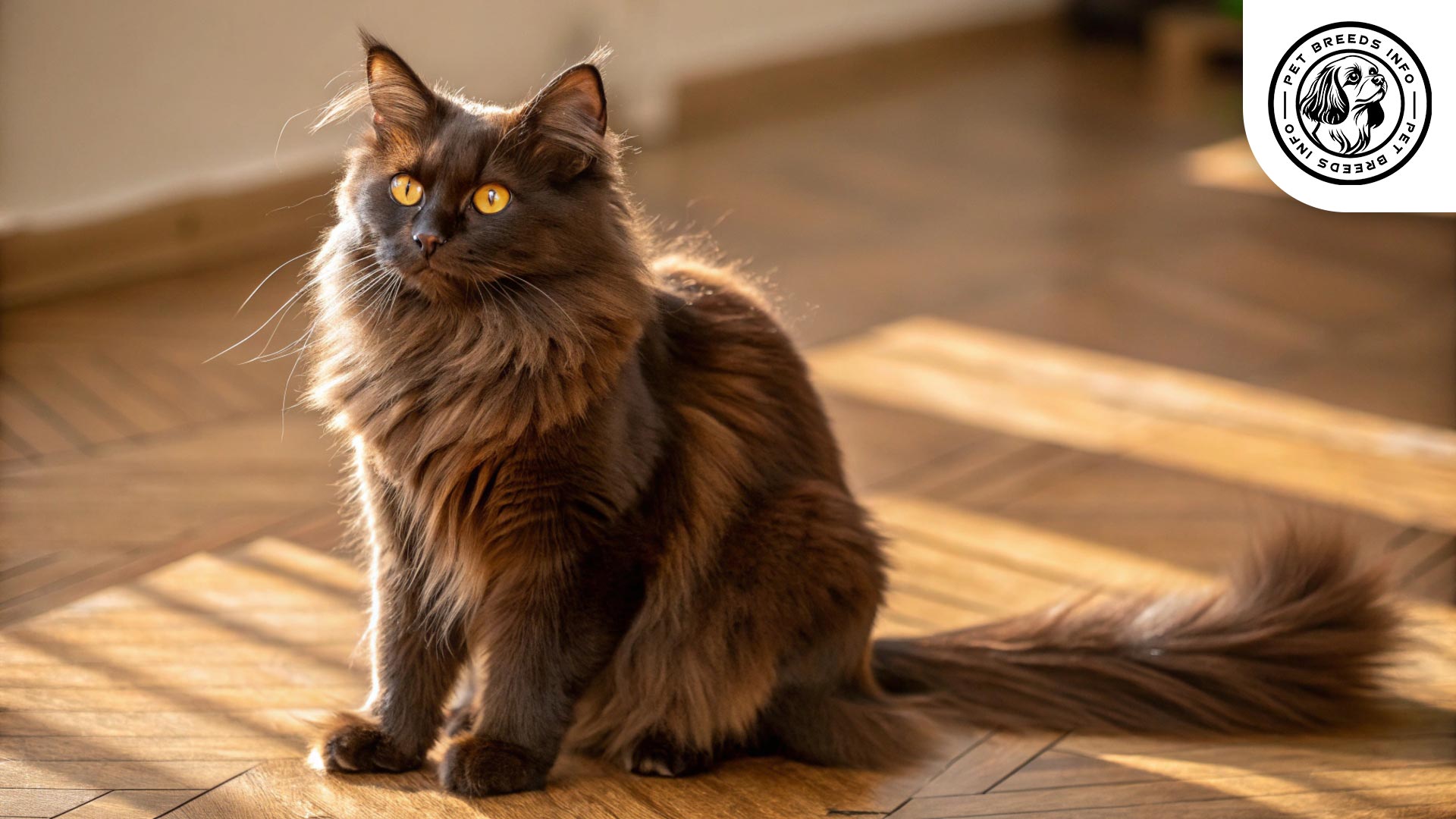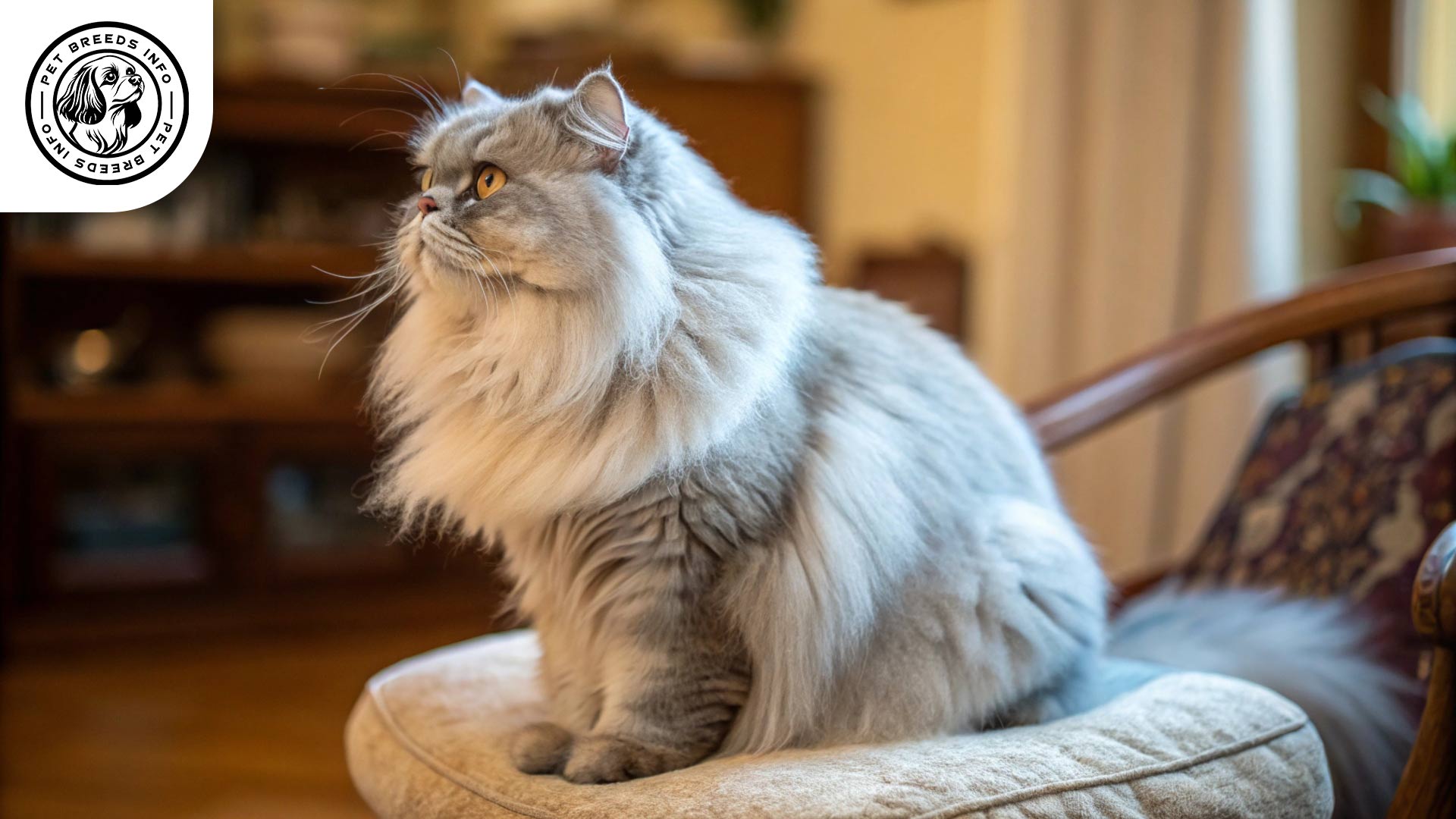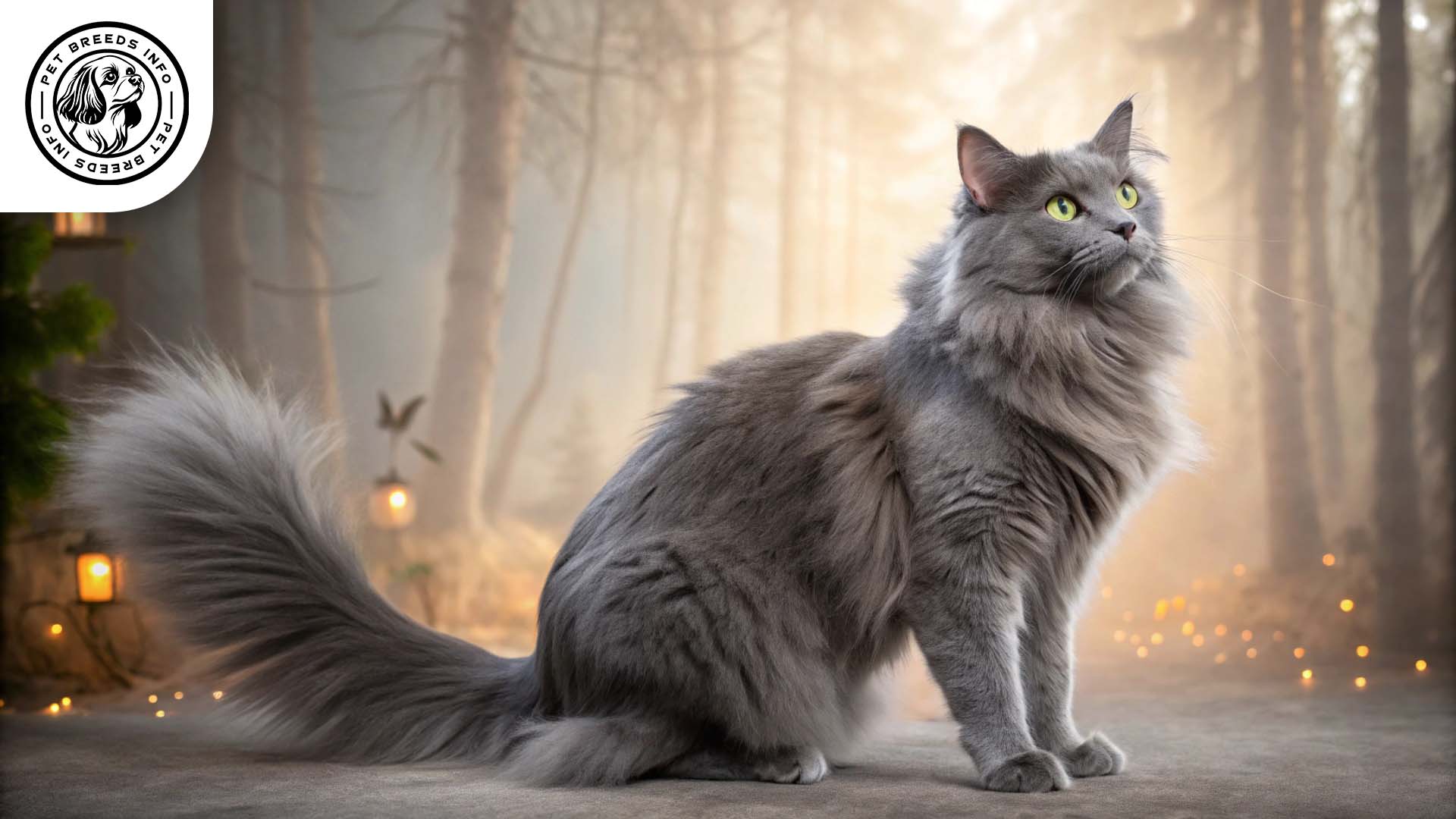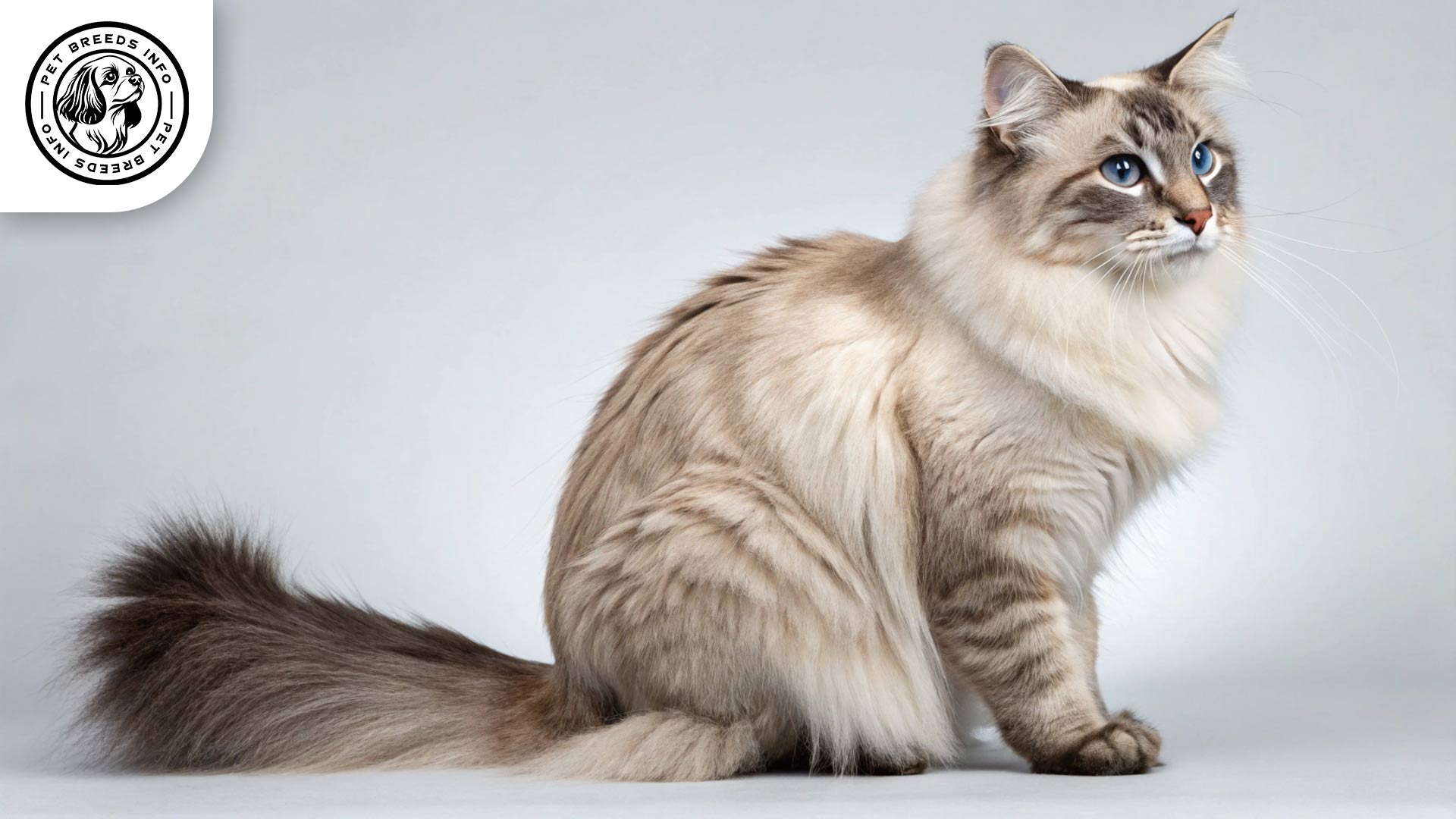Persian Cat Breed : Size , Health, Price & Personality
General Introduction of the Breed
The Persian cat, also known as “Persian Longhair,” is a well-known breed of domestic cat. In Farsi, it is called “Gorbe-ye Irâni” (گربهی ایرانی).
It originates from Persia, modern-day Iran, and was introduced to Europe in the 17th century. The breed gained immense popularity for its luxurious coat and sweet temperament, eventually becoming one of the most beloved cat breeds worldwide.
Table of Contents
| Weight | Males: 9-14 lbs (4-6 kg), Females: 7-11 lbs (3-5 kg) |
| Lifespan | 12-16 years |
| Diet | High-quality protein-based diet; mix of wet and dry food; avoid toxic foods like chocolate, onions, and dairy |
| Care | Daily grooming required; regular bathing, eye cleaning, nail trimming, and dental care |
| Health | Prone to polycystic kidney disease (PKD), respiratory issues, eye conditions, and dental problems |
| Color | Wide range, including white, black, blue, cream, red, silver, bicolor, tabby, and pointed |
| Nature | Gentle, affectionate, calm, intelligent, prefers a quiet environment, forms strong bonds with owners |
| Price | $500 – $5,000, depending on breeder reputation and pedigree |
Physical Characteristics
Persian cats are medium to large in size. Males typically weigh between 9-14 lbs (4-6 kg), while females weigh 7-11 lbs (3-5 kg).
They have a long, dense coat that comes in a wide range of colors, including white, black, blue, cream, red, and silver. This breed can also have various patterns, including solid, bicolor, tabby, and pointed.
Their eyes are large, round, and expressive, often in shades of copper, blue, green, or odd-eyed (one blue and one copper).
Read More: Ocicat Cat
Their ears are small and rounded, set wide apart on their broad head. They have a short, thick tail that complements their overall stocky build.
The most distinctive characteristic of Persian cats is their flat or “brachycephalic” face with a short nose, which gives them a unique appearance.
Personality and Temperament
Persians are known for their gentle and affectionate nature. They are intelligent but not as active as some other breeds, preferring a quiet and relaxed environment.
They have a low to moderate energy level. While they enjoy playtime, they are not overly demanding of attention.
They form strong bonds with their owners and enjoy companionship but are not excessively clingy.
Persians get along well with children and other pets, making them great family companions. However, they prefer a calm household rather than a noisy or chaotic one.
They are not known for strong hunting instincts but love engaging in gentle play with their owners.
Persians are sensitive to environmental changes and prefer stable, predictable surroundings. They may need extra time to adjust to new situations.
Care and Maintenance Requirements
Persians do not require intense exercise but benefit from moderate play sessions to stay healthy.
They are well-suited for apartment living and indoor environments. They should not be left outdoors unsupervised due to their delicate health.
Their long coat requires daily brushing to prevent tangles and matting. They shed moderately and need regular grooming.
Read More: Norwegian Forest cat
They are sensitive to heat and humidity due to their thick coat and flat face, which can cause breathing issues.
Regular hygiene care includes bathing every few weeks, trimming their nails, cleaning their ears, and brushing their teeth to prevent dental problems.

Diet and Nutrition
Persians should eat high-quality dry, wet, or raw food that supports their overall health, especially for maintaining their coat and avoiding digestive issues.
They may be prone to obesity, so portion control is important. They benefit from multiple small meals throughout the day rather than one large meal.
Certain foods should be avoided, including chocolate, onions, garlic, and dairy, which may cause digestive problems.
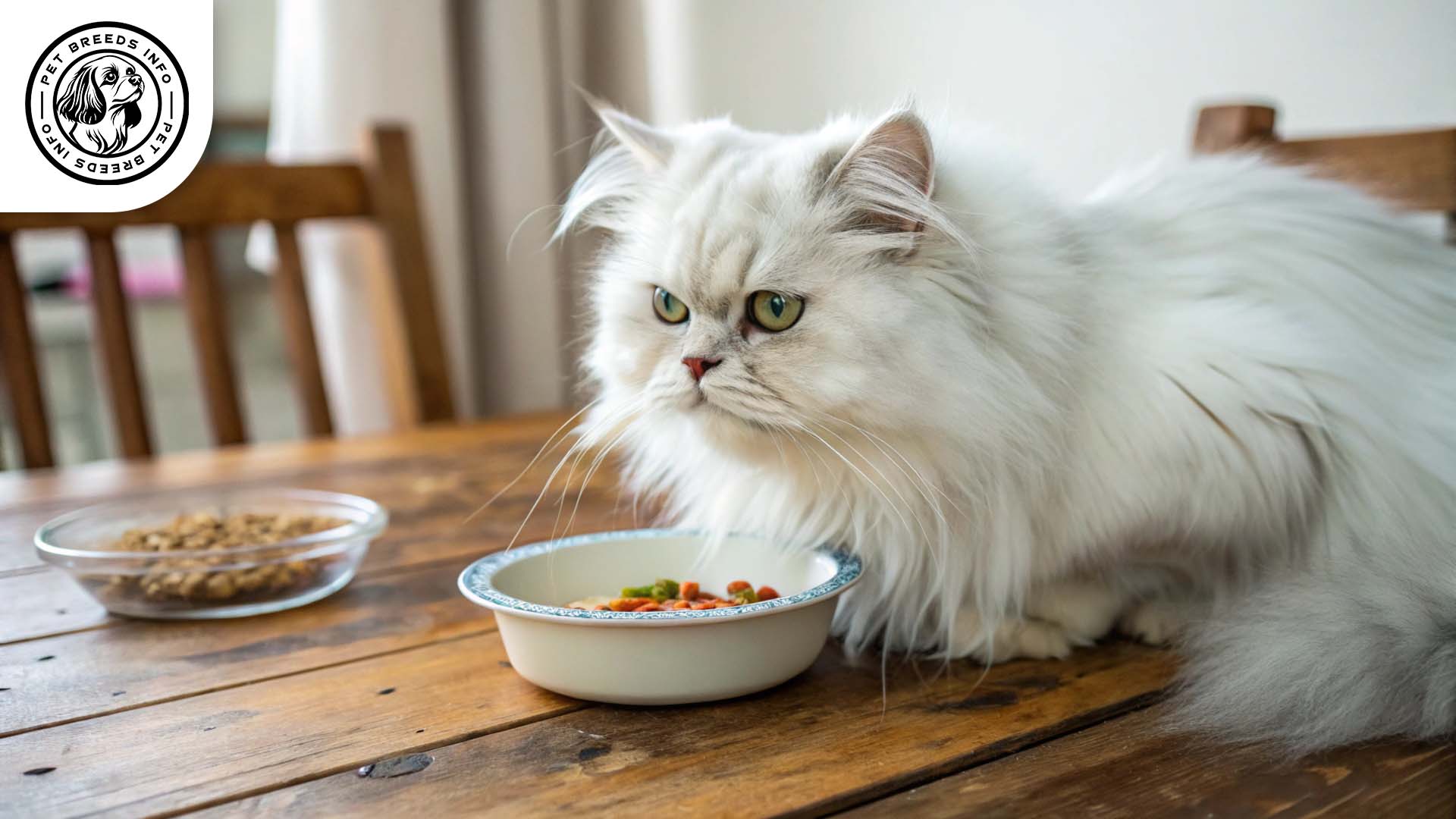
Health and Common Medical Issues
Persians are prone to certain genetic health issues, including polycystic kidney disease (PKD), respiratory problems due to their brachycephalic face, eye conditions, and dental issues.
They require regular veterinary checkups to monitor their health. Vaccinations and parasite control are crucial to their well-being.
Their average lifespan is between 12-16 years, although well-cared-for Persians can live even longer.
Training and Behavior Management
Training a Persian cat is fairly easy, as they are intelligent and can learn basic commands, including litter training and scratching post training.
Early socialization helps them feel comfortable with new people and environments.
Positive reinforcement, including treats and praise, is the best way to encourage good behavior and manage any undesirable tendencies.
Read More: Birman Cat Breed
Interaction with Other Animals and Humans
Persians are affectionate and gentle with children, making them wonderful family pets.
They get along well with other cats and even dogs if introduced properly at an early age.
They are ideal for both individuals and families, preferring calm and quiet households.
While they enjoy human companionship, they are not overly independent and rely on their owners for care and affection.
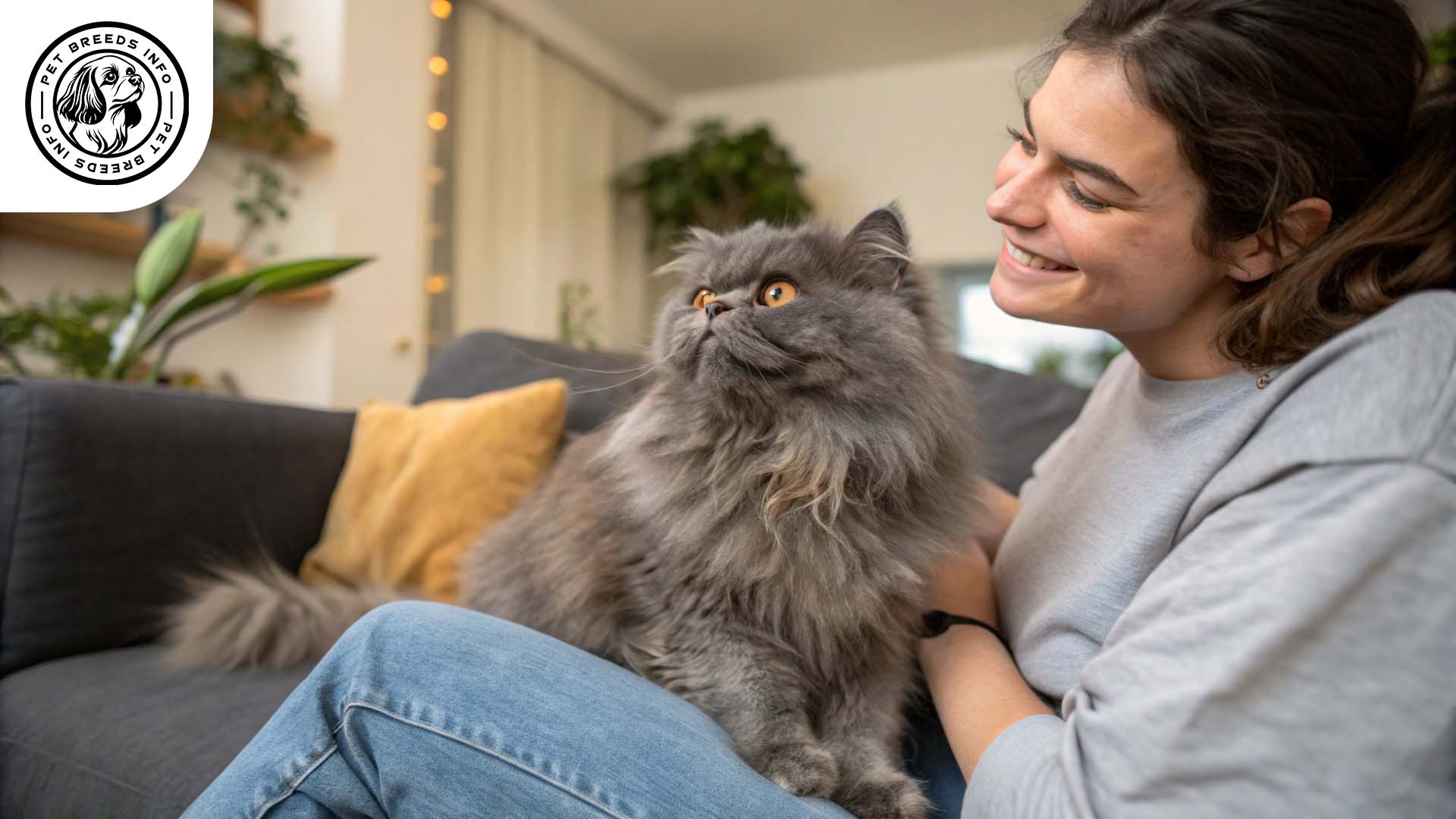
Price and Availability
Persian cats can be expensive, with prices ranging from $500 to $5,000 depending on the breeder, pedigree, and coat color.
Prospective owners should adopt from reputable breeders or shelters that focus on health and ethical breeding practices.
Adoption is also an option, as some Persian cats are available through rescues and shelters.
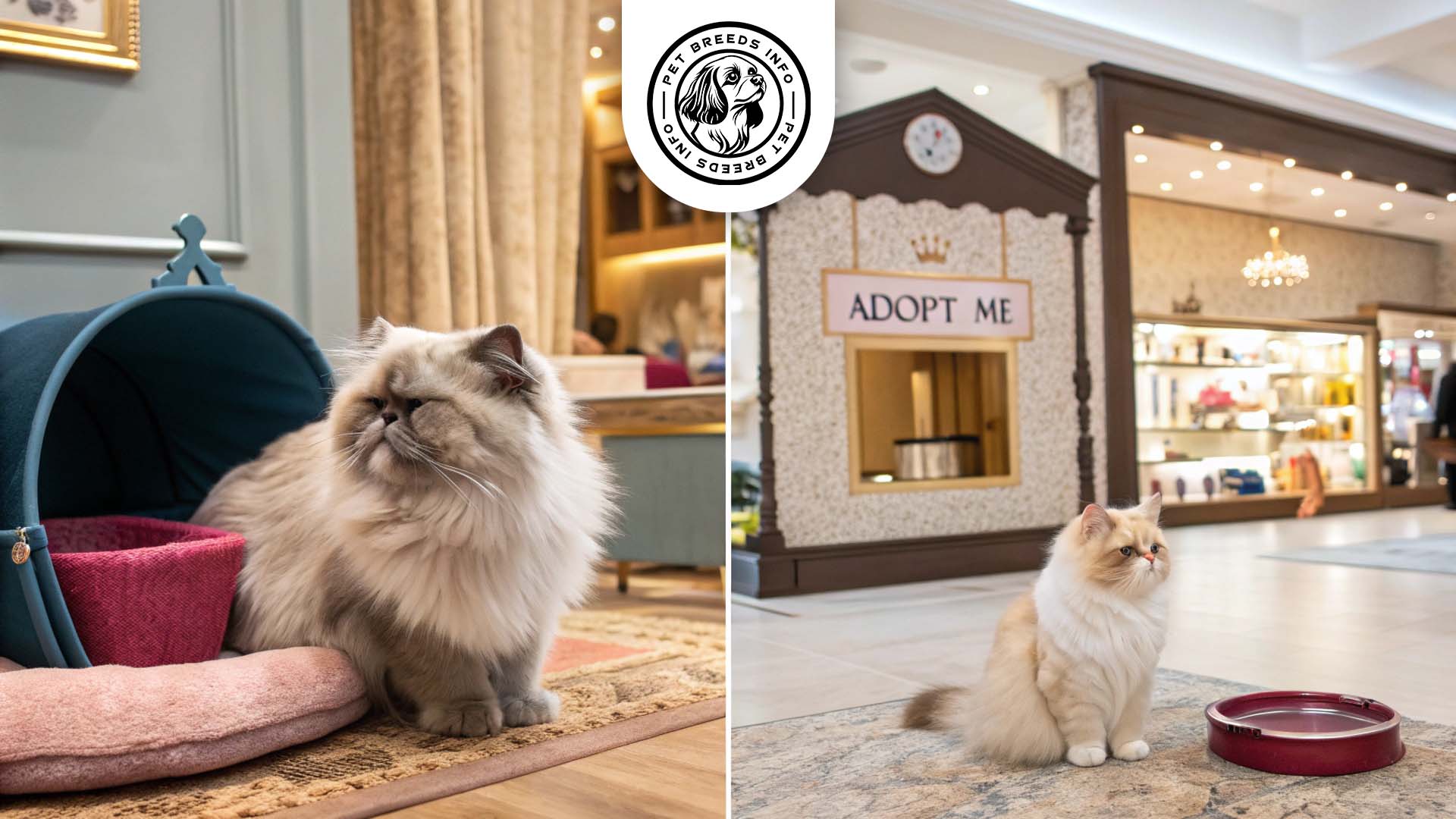
Conclusion and Final Thoughts
The Persian cat is a perfect fit for owners who appreciate affectionate and low-energy companions. They thrive in peaceful homes with patient and committed caregivers.
Regular grooming and health monitoring are essential to ensure their well-being.
Potential owners should consider their grooming needs, potential health challenges, and sensitivity to environmental factors before adopting a Persian.
Overall, this breed is a fantastic choice for those willing to put in the effort to care for their luxurious coat and gentle personality.
FAQ
Are Persian cats high-maintenance?
Yes, Persian cats require daily grooming due to their long, dense coats. Regular brushing, bathing, and eye cleaning are essential to prevent matting and tear staining.
Do Persian cats get along with children and other pets?
Yes, Persian cats are gentle and affectionate, making them great companions for children and other pets. However, they prefer a calm environment and may not tolerate rough play.
Are Persian cats prone to health issues?
Persian cats are susceptible to certain health problems, including polycystic kidney disease (PKD), respiratory issues due to their flat face, eye conditions, and dental problems. Regular vet checkups are important.
Do Persian cats need a special diet?
Persian cats benefit from a high-quality diet rich in protein and essential nutrients to support their coat health and prevent digestive issues. Portion control is necessary to avoid obesity.
Are Persian cats active and playful?
Persian cats have a low to moderate activity level. They enjoy playtime but are generally more relaxed and prefer lounging in comfortable spots.
